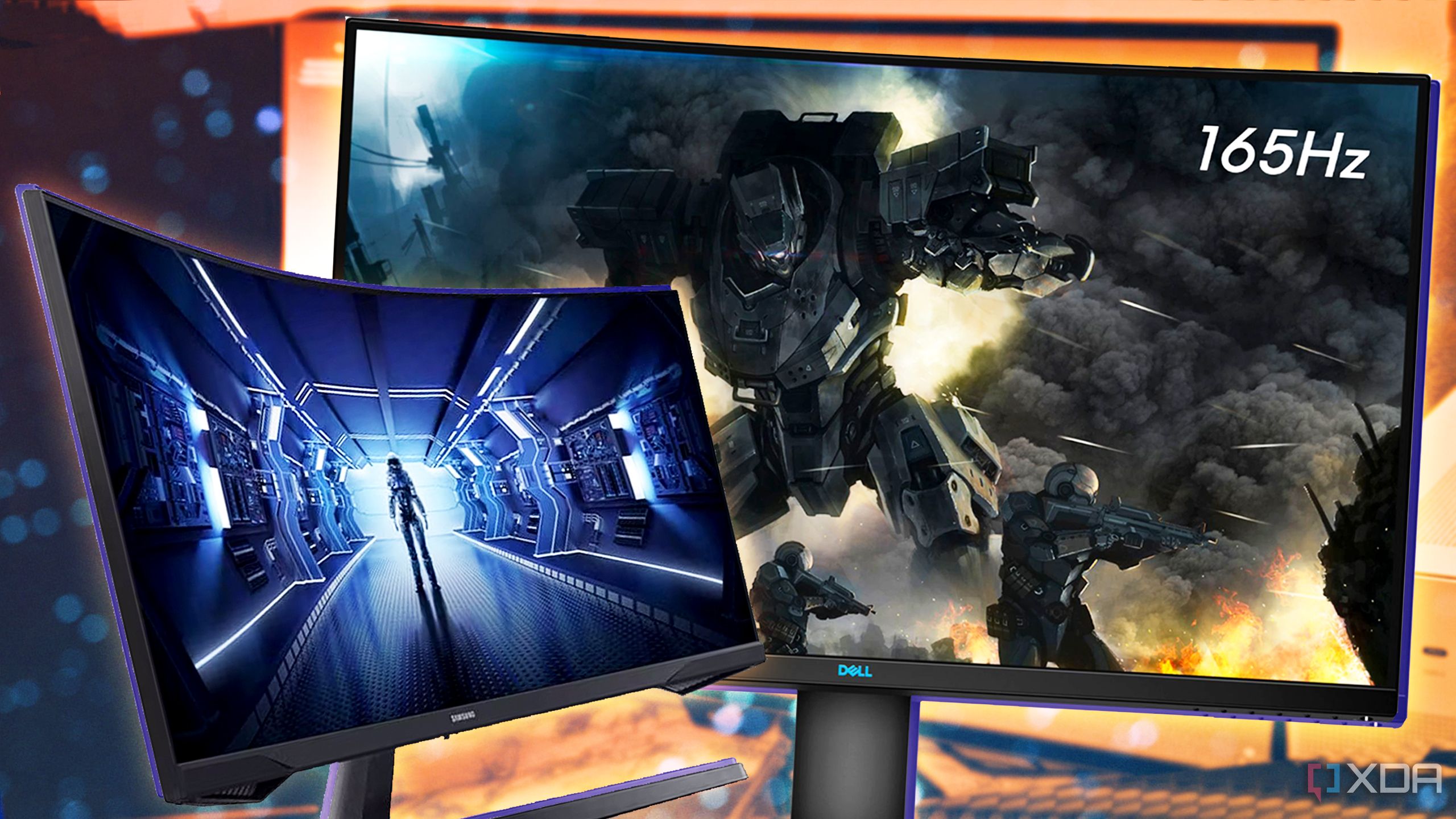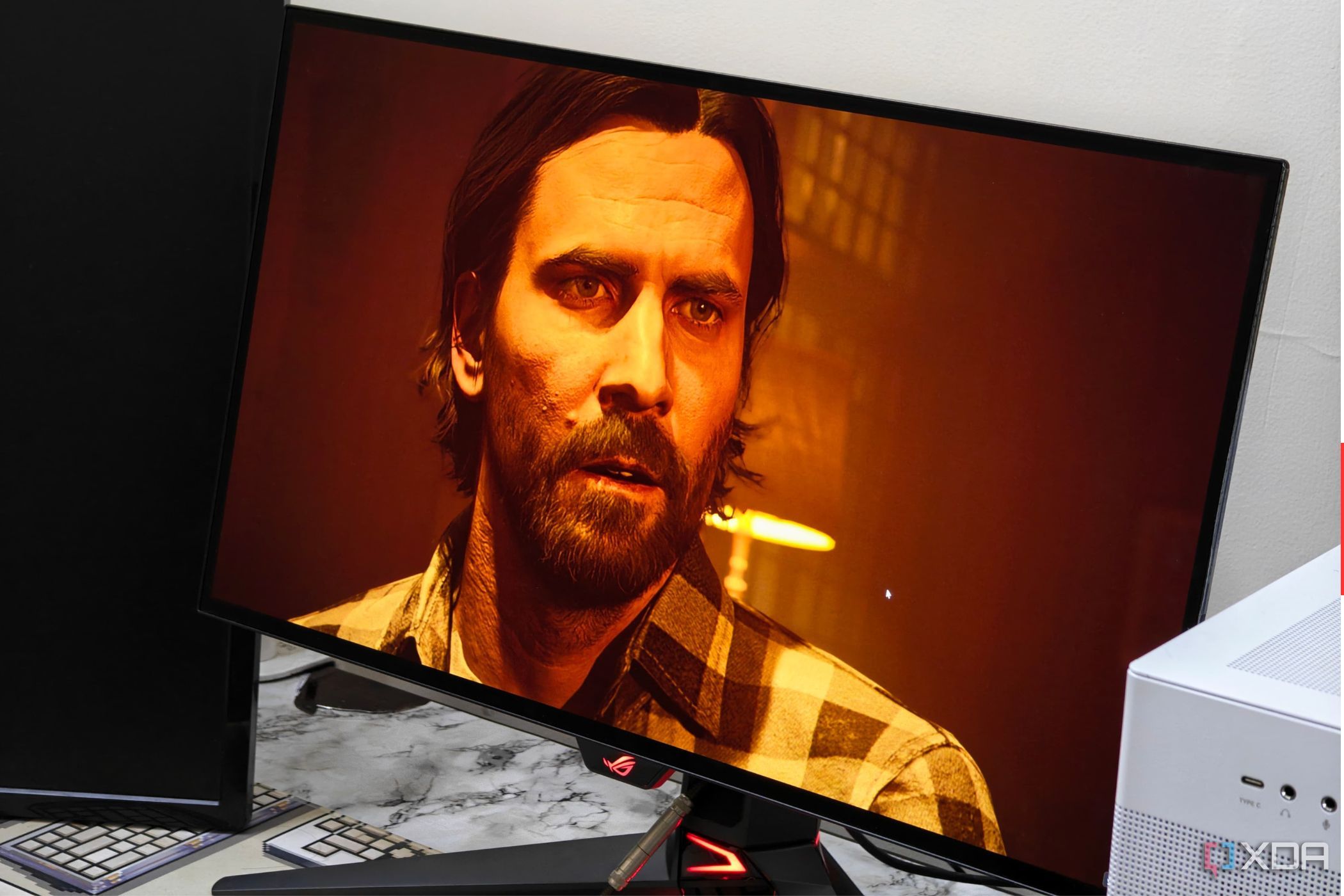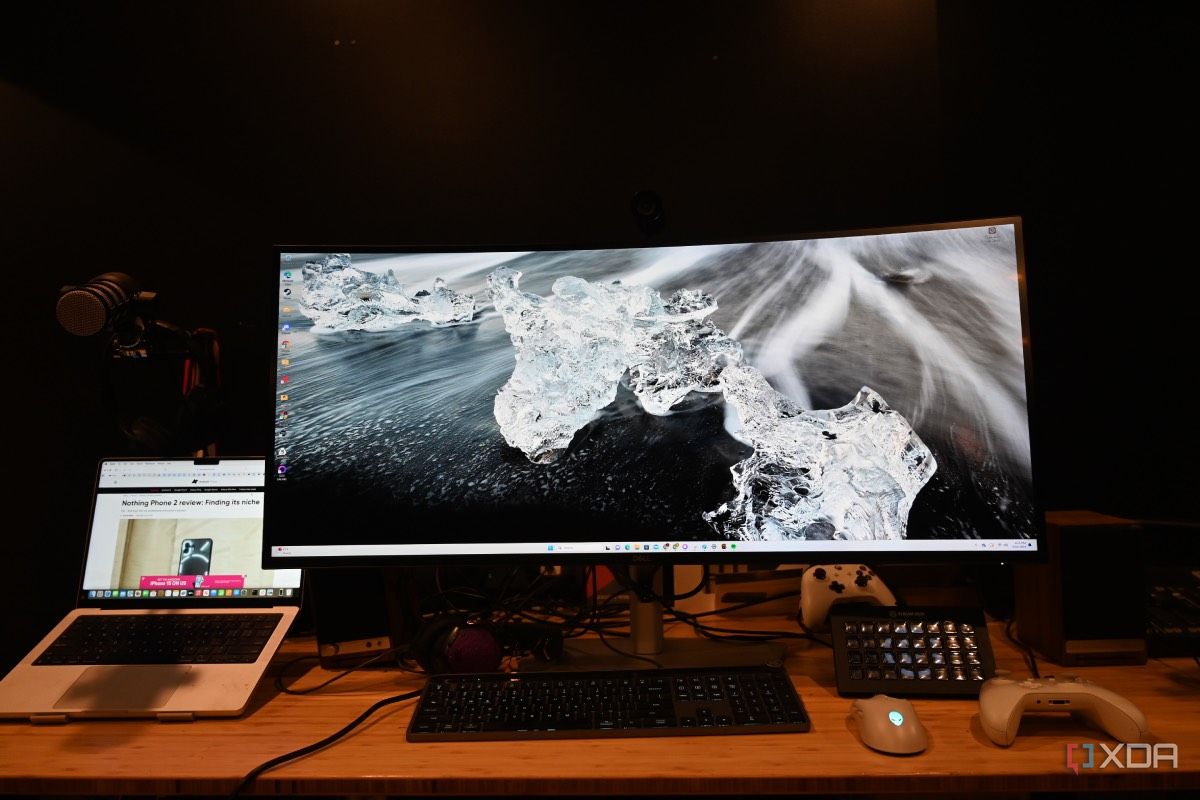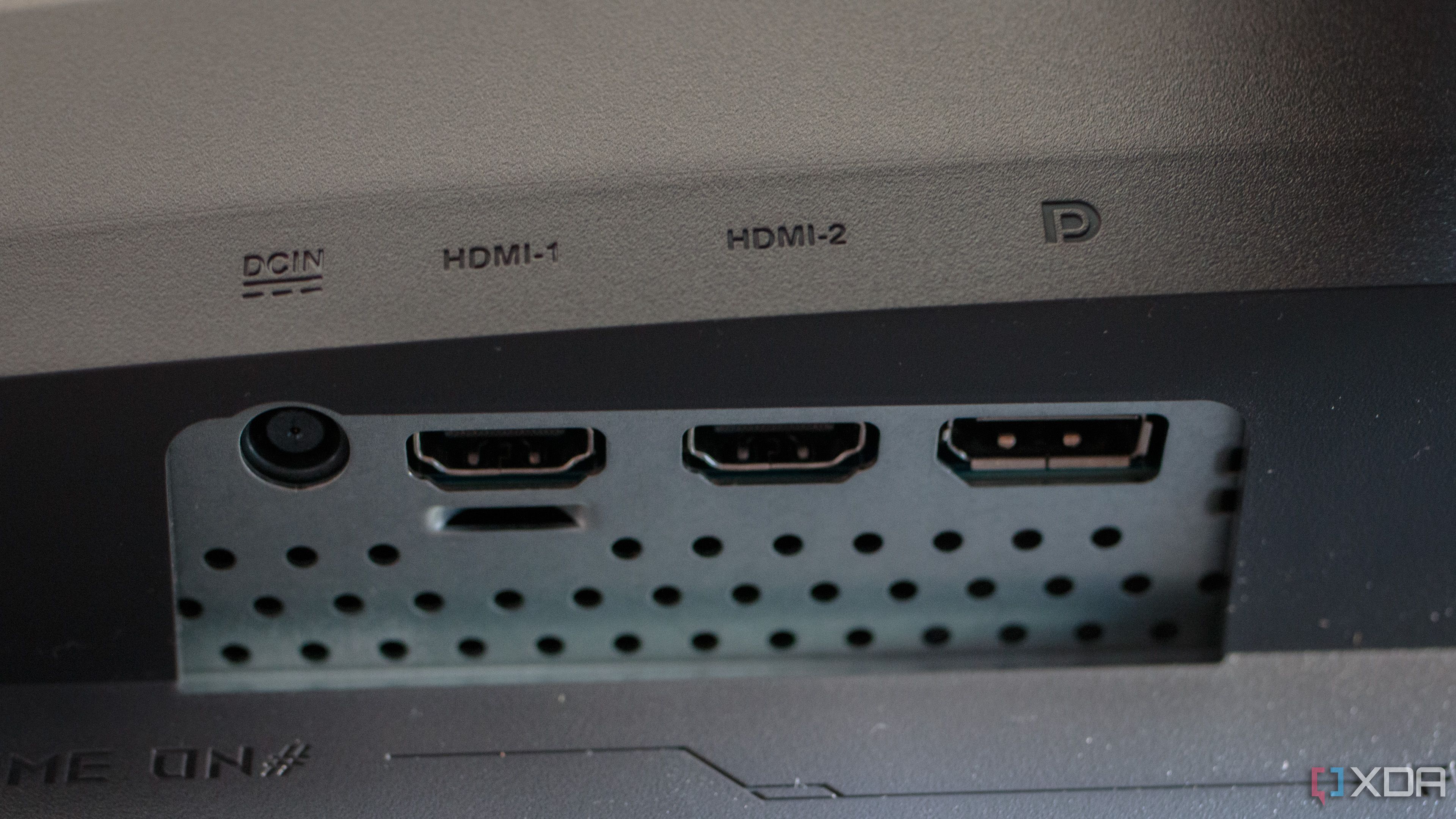Having a monitor is essential to finishing up any computing setup, but the tricky thing is that there is no best monitor for every user. Whether you want it for gaming, a professional workspace, or a blend of the two, finding the right monitor for your needs is tricky. There are multiple panel types to choose from, differing sizes, aspect ratios and refresh rates, and connectivity options to consider. Some monitor specifications are firmly in the “nice-to-have” camp, though, so these are the seven features I decide first when I’ve got the itch to upgrade my monitors.
7 Screen size and aspect ratio
Whether it’s for gaming or productivity, size matters
Size matters, or so they say, but that’s especially true when choosing your next monitor. The monitor size you pick depends on a few other external factors, like the size of your desk, what other devices also share the space, and what you want to use your monitor for. The most common size currently is 27 inches, which gives a good amount of screen real estate while not taking up too much space on your desk. Competitive gamers often go for 24-inch displays, as these are usually geared for refresh rate instead of pixel count, giving their reflexes more chance in games. 32-inch displays are getting more common, especially with OLED monitors, but they can feel a little large on many desks. Anything over 32 inches is usually found on ultrawide, which could be up to 49 inches diagonally, although they’re not as tall as normal monitors. Ultrawides are close to two 16:9 monitors side-by-side, so you get the benefits of dual monitors without bezels in the middle.
Most monitors have an aspect ratio of 16:9, which is also the aspect ratio of widescreen TVs, so you’re immediately familiar with it. Some productivity monitors can be 16:10 or even 3:2 to give you a little bit more vertical space for documents. Ultrawides are 21:9 mostly, with some of the larger models being 32:9. Which aspect ratio to pick is a personal preference, although I do prefer ultrawides for productivity and gaming use for their immersiveness.
6 Resolution
1440p is a good place to start
Once you know your preferred screen size, it’s much easier to decide what resolution you want. For example, a 27-inch monitor is a good size for FHD (1080p), QHD (1440p), or UHD (4K), so you can choose the resolution that fits your other needs. Lower resolutions are easier for your GPU to drive, are more affordable, and can come with higher refresh rates. QHD (1440p) is now the sweet spot for both productivity and gaming, giving you improved image quality and the ability to have more apps showing at once, but you will need a more powerful graphics card to take full advantage of it. UHD (4K) and above is firmly in the premium or luxury realm, where even budget models can cost over $500.
5 Panel type
Each display type has different pros and cons
Choosing the best monitor for you is made more difficult by having to choose between four display types; IPS, VA, TN, and OLED. There are also sub-types of each of these and various coatings that can be applied. It’s more difficult to find TN panels, as VA and IPS have taken over. That narrows the choices down slightly, but the other three options have strong reasons why you should pick them.
- IPS: High color accuracy, brightness depends on backlight, lower contrast ratio than VA or OLED, good off-axis viewing quality
- VA: Decent color accuracy, brightness depends on backlight type, high contrast ratios, look washed-out when viewed from an angle
- OLED or QD-OLED: Best color accuracy, near-infinite contrast ratio, high peak brightness, low average brightness
It’s worth noting that all panel types can now be found at high refresh rates, making it easier for gamers to find the best monitor for them. IPS and VA can both be found with Mini-LED backlighting, which drives brightness levels up and enables better local dimming for HDR performance. Displays can also be glossy, matte, or coated with quantum dot film to improve color accuracy.
As to which panel type to choose, that really depends on your budget and what factors you value. IPS is probably the best place to start looking, as it has high image quality, is responsive, and is good for off-axis viewing. VA is better if your desk is in a light-controlled area, as then you can benefit from the higher contrast ratios. OLED, QD-OLED, and Mini-LED are all premium panel types, so if you have around $1,000 in your budget, that’s where you should start.
4 Refresh rate
Even if you’re not a gamer, a higher refresh rate has benefits
If you’re a gamer, you know that having a faster refresh rate gives you a better experience. Not that long ago, 144Hz was the peak of monitor refresh rates. While most mainstream monitors are 60Hz, you can now get monitors that have a 540Hz refresh rate, which are aimed at high-level gamers. Most high-end OLED displays are 240Hz now, but you can also get 480Hz from a few manufacturers, or some dual-mode monitors can prioritize refresh rate or resolution, giving you the best of both worlds. Now, almost nobody needs a 540Hz or 480Hz display unless you play esports titles where you actually get similar FPS in-game. Most gamers should look for something in the 165Hz range for more budget monitors, and 240Hz if they’re going for premium models. Productivity users can probably get away with 60Hz, but 120Hz is going to give a much smoother experience on your desktop.
3 Brightness and contrast ratio
Match this to your desk environment
Two of the biggest factors in your visual enjoyment of your monitor are brightness and contrast ratio. These two factors also control how well the monitor handles HDR content if you value that. The backlight handles brightness on VA, IPS, and TN panels, and mainstream models have a peak brightness level between 250 and 400 nits. Newer panels are often closer to the top of this range, which is more than enough brightness for office use or gaming. Mini-LED monitors can be substantially brighter, and rival the peak brightness of OLED panels of around 1000 nits. It’s worth noting that OLED and QD-OLED have lower SDR brightness levels, so if your desk is in a well-lit area you might be better off with Mini-LED if you value HDR.
Contrast ratios and black levels make the image on your monitor look better, and OLED and QD-OLED monitors are the best at this, as the self-emissive pixels can turn off completely to form true black levels. IPS panels are known to have more grayish blacks, with a contrast ratio of around 1000:1. VA panels are better in this regard, but TN panels are the worst offenders for low contrast ratios. If your work area is light-controlled, any of these types will work well.
2 Port selection
Make sure you can connect everything together
It’s also essential to consider what ports your display signal is coming from, so you get a monitor that works with your computer. The best GPUs all have DisplayPort and HDMI, while some also have USB-C. It’s rare for computers to have DVI or VGA these days, but it can be found on some business-focused laptops or older devices. Laptops sometimes have HDMI, but most use USB-C for external displays. Some monitors have internal USB hubs, so you can get more ports by passing one USB cable from your computer, and premium models might have a KVM, which enables you to plug two computers into the same monitor and control both with the same mouse and keyboard.
1 Ergonomics
An adjustable stand is helpful
One of the often overlooked aspects of monitors is ergonomics. It’s easy to get swayed into looking at panel type, refresh rates, or color accuracy, but ergonomics have a huge impact on how you use the monitor. A good stand has adjustments for swivel, tilt, and height, but this is often found only on premium monitors like the Dell UltraSharp U2723QE and LG UltraWide 49WQ95C. Many budget monitors only let you adjust the tilt, which isn’t good for getting the best sitting position.
If you’re planning on using a monitor arm with your new monitor, then it doesn’t matter as much what the OEM stand can do. What does matter is if the monitor has VESA mounting support, preferably native support, so you don’t have to get additional hardware to mount it. Then, you can get the perfect ergonomic position for where you sit.
Choosing a new monitor is tricky but figuring out these features first helps the process
Buying a new monitor isn’t easy, as the sheer number of good monitors on the market makes the process lengthy. The good news is that panel quality has vastly improved, even on budget models, so it’s easier to be happy with whichever monitor you choose. If you figure out your needs based on this list, then you’ve already done most of the hard work and narrowed down the choices considerably. Everything else, from adaptive sync to the eternal battle between curved and flat panels, is personal preference, and you’ll know once you’ve experienced it once if it’s for you or not.




